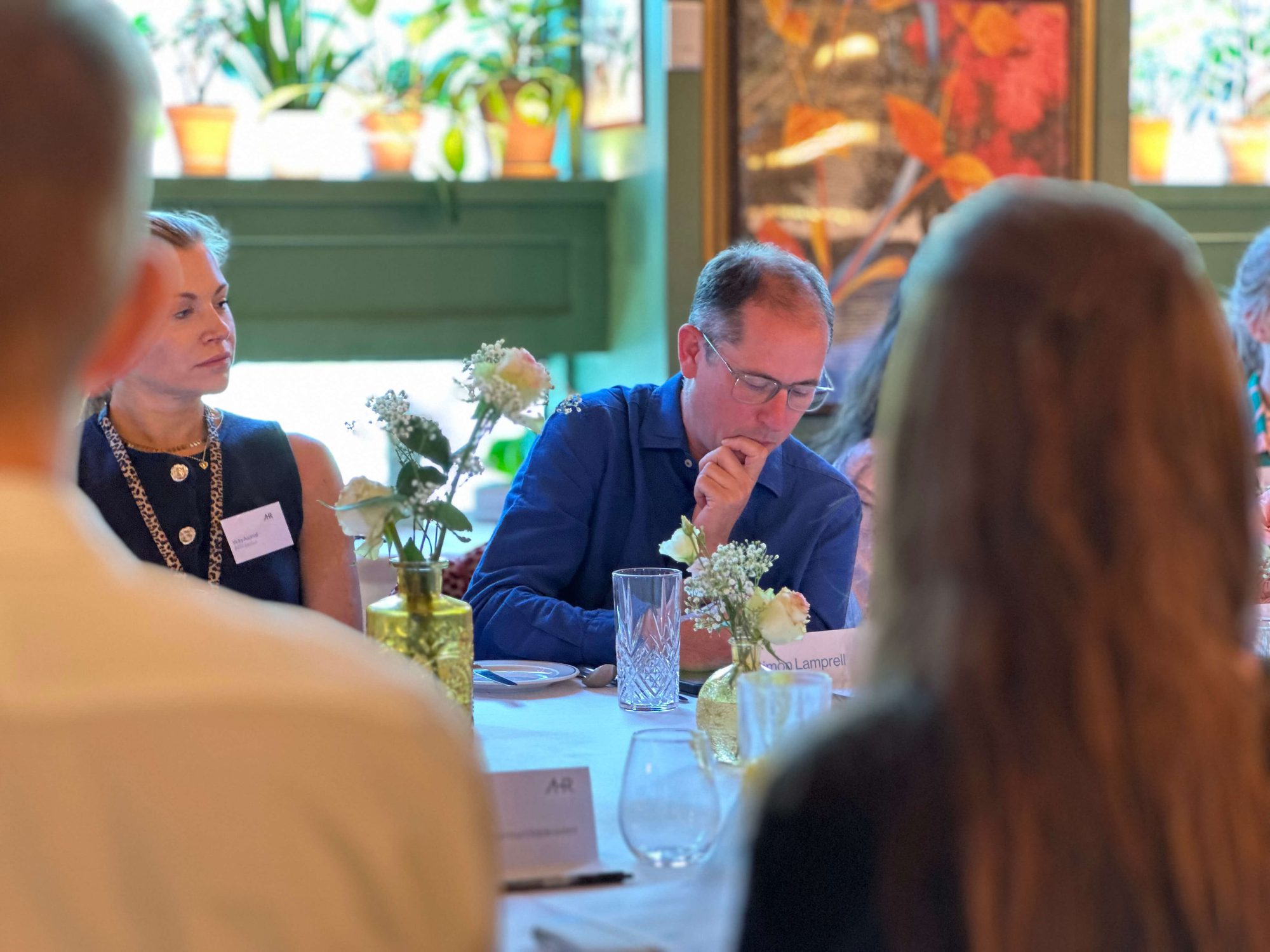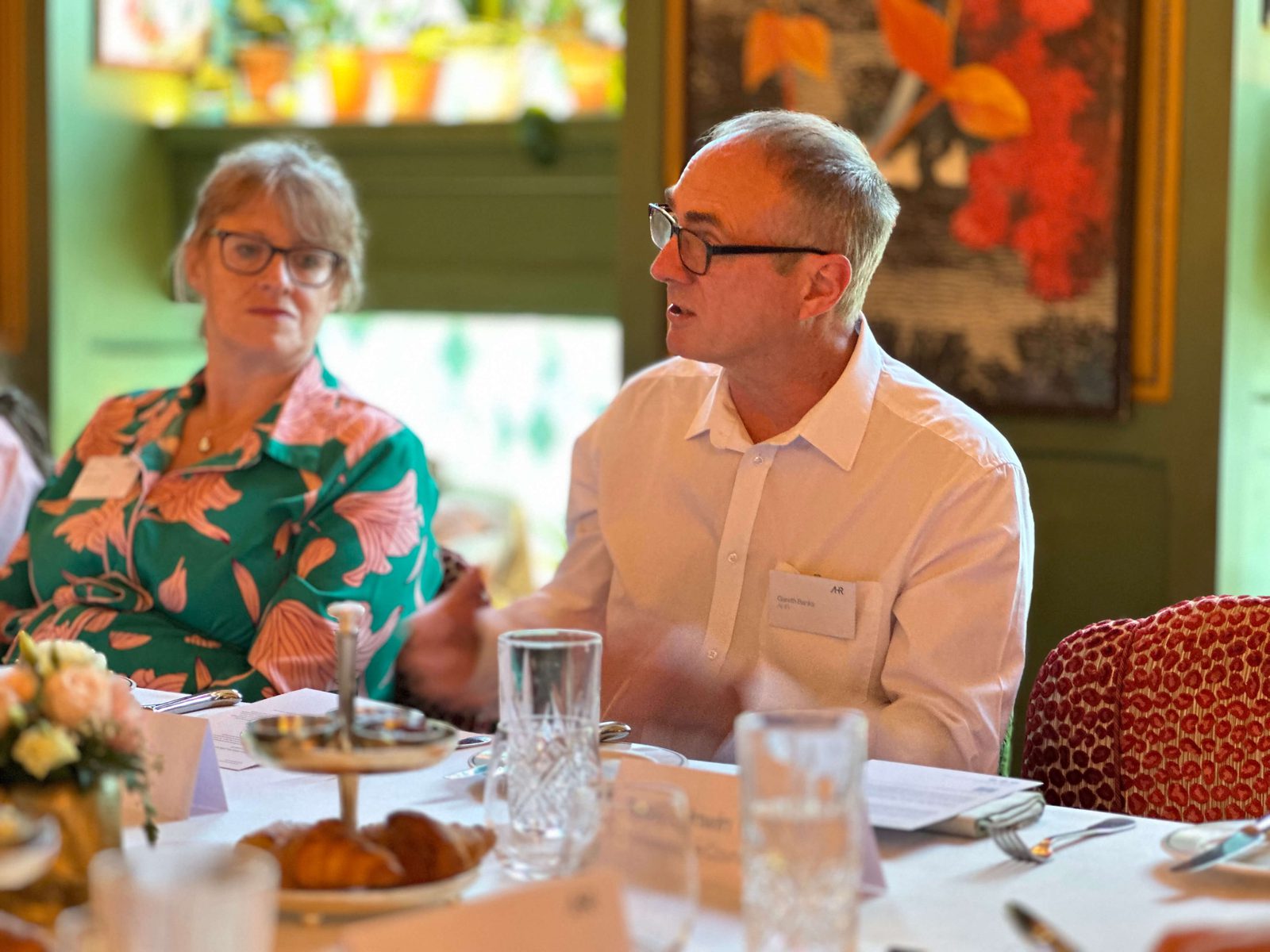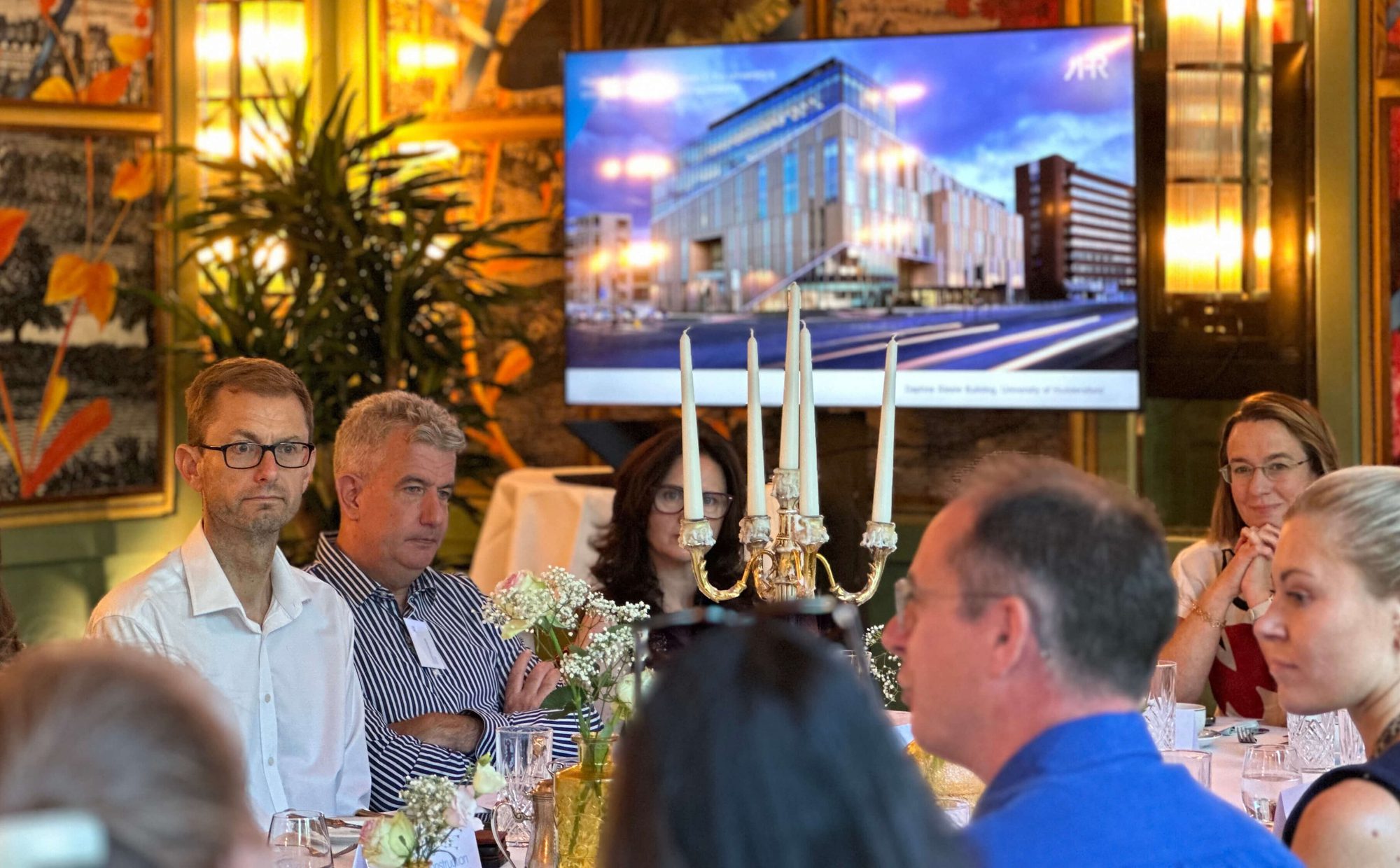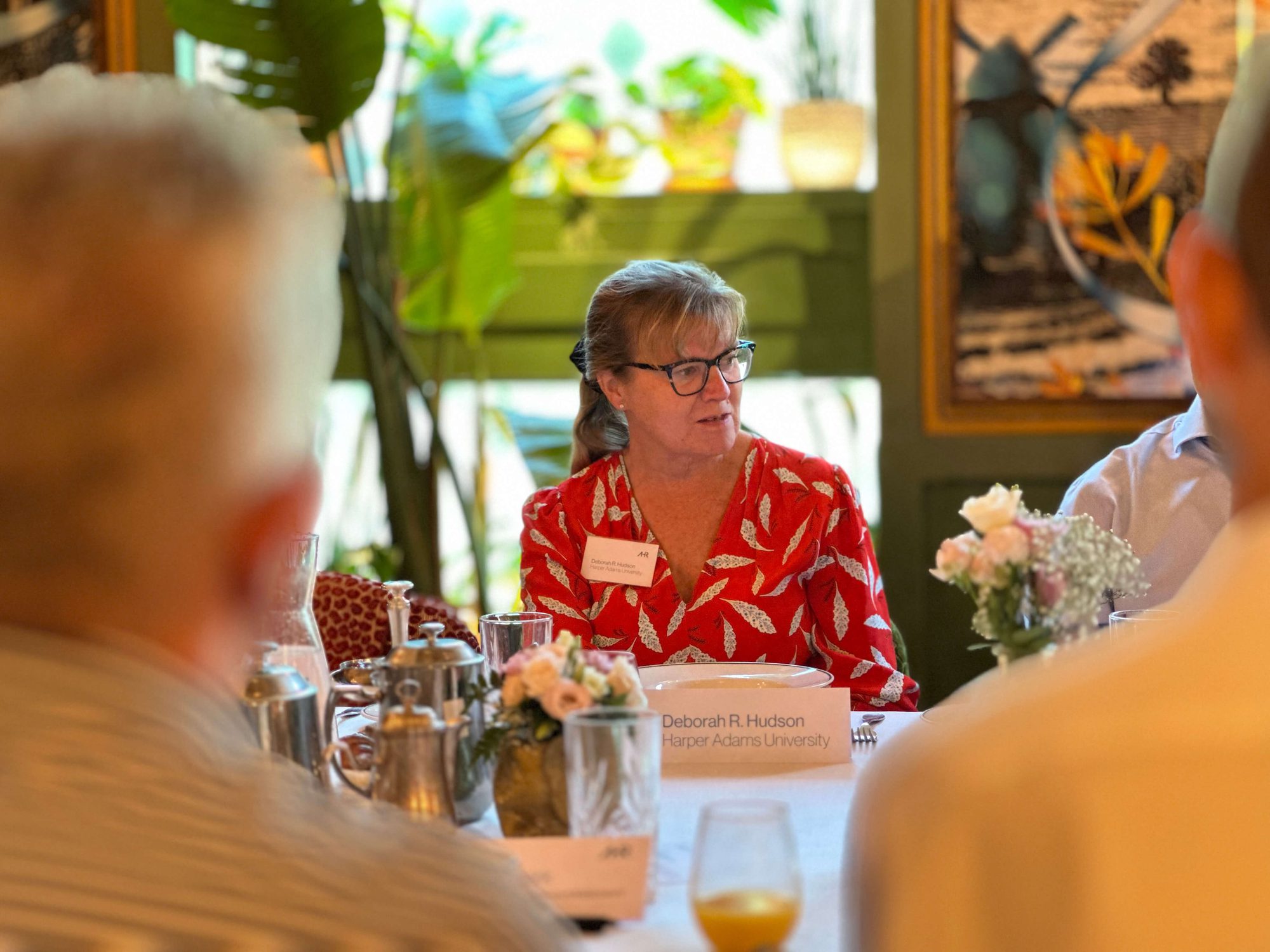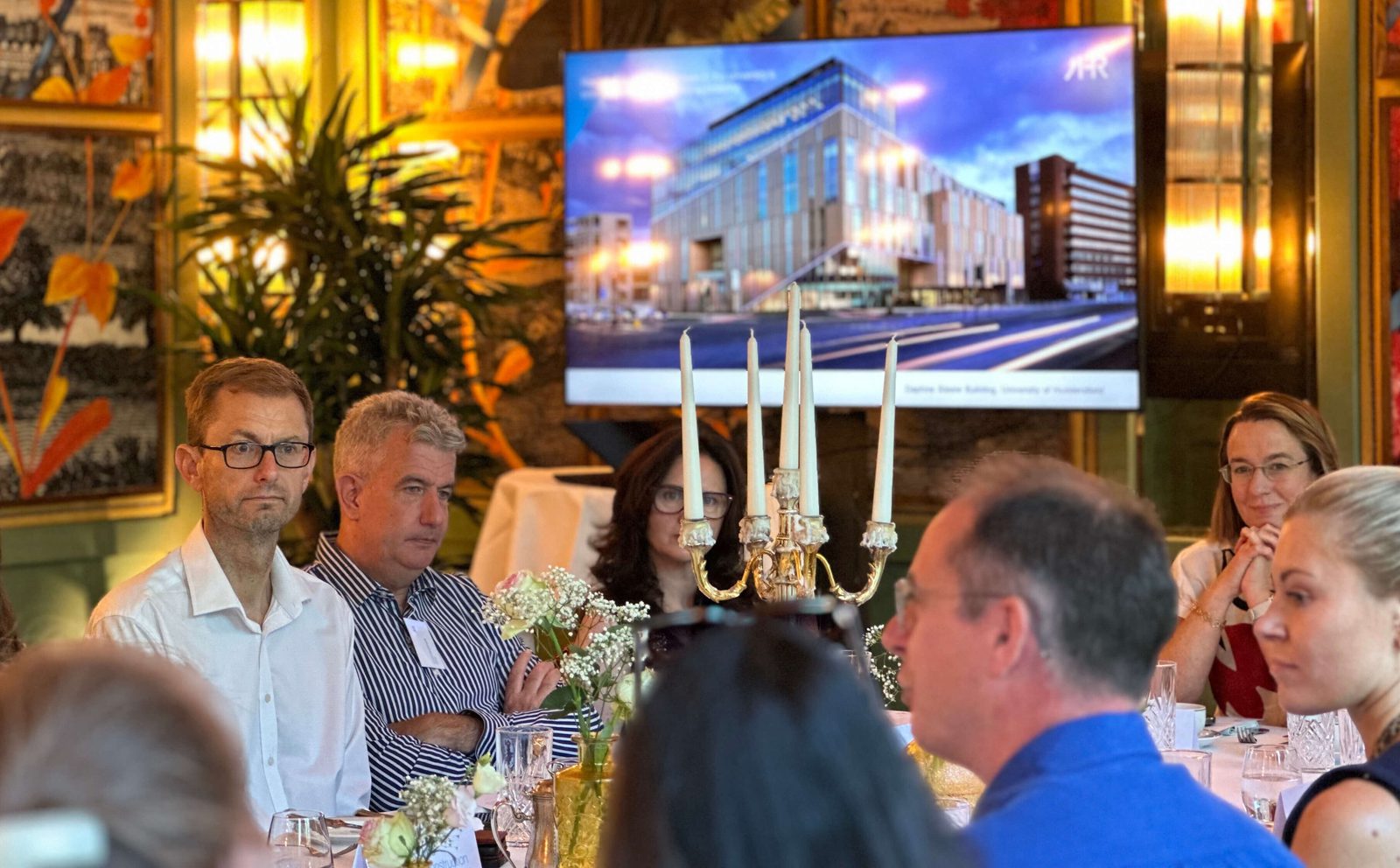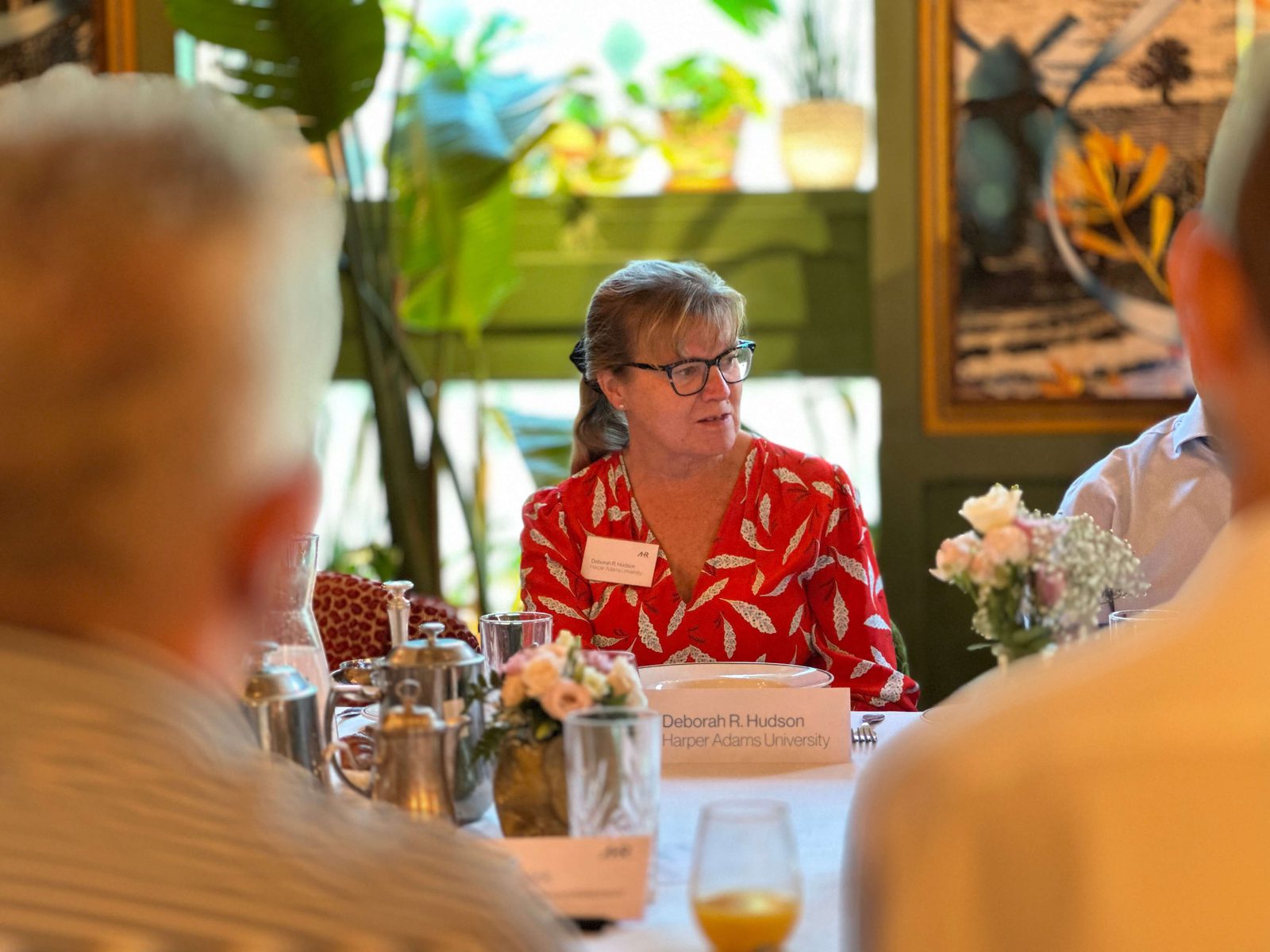
Practice News
Achieving decarbonisation: Rethinking materials in construction
by AHR
The landscape of sustainable construction and energy is changing fast. New material innovations, evolving energy strategies and shifting regulations are creating both challenges and opportunities.
We recently came together in Birmingham for the first event in our latest series of decarbonisation roundtable discussions - an open, collaborative forum where professionals from across the built environment share knowledge, challenge assumptions and explore practical solutions to today’s most pressing climate challenges.
This latest series is framed around the theme ‘Shaping the future’ — with a particular focus on sustainable materials and energy in construction. The timing felt especially relevant, taking place just days after the UK’s updated Industrial Strategy was published.
The strategy outlines a 10-year plan for sustainable economic growth and reaffirms the built environment’s pivotal role in delivering a low-carbon future. For those working across the industry, it served as a clear signal: if we want to lead, now is the time to act.
The roundtable offered a chance to explore what this means in practice through meaningful conversation, with a wide mix of voices and disciplines. Whether participants were leading sustainability strategies or simply looking to build their understanding, everyone arrived with a shared aim: to leave with greater clarity, practical insight and a deeper sense of collective purpose.
Read on for the key themes and takeaways that emerged from the discussion.
1. The rise of circular thinking and its practical realities
Circularity emerged as a central theme. The conversation reflected a growing willingness across the sector to explore how reuse, refurbishment and closed-loop strategies can shape more sustainable outcomes on real projects.
Practical examples included reclaimed raised-access flooring being refurbished and returned to the market, structural steel reused across schemes, and even electric vehicle batteries stripped for viable cells and repurposed for energy storage. These are no longer distant ambitions but increasingly tangible interventions, shifting the way materials are valued and specified.
Yet challenges remain. Recycled or reused products are often still more costly than new alternatives, and supply chains remain patchy. As one attendee observed, “We wanted to design around reused steel sections, but the entire lot got sold to another buyer overseas. The stock just isn’t stable enough yet.”
Even when circular materials are specified, they often lack protection during cost reviews. The discussion highlighted that while the appetite for circularity is growing, its success relies on systemic change - from more flexible procurement models to earlier design engagement and commercial structures that reward long-term value over short-term savings.
2. Digitalisation and regulation are setting a new baseline
Digital tools are now playing a crucial role in improving material efficiency, not just at the specification stage, but from the earliest design decisions. Several participants shared how intelligent modelling is being used to reduce waste, often by optimising layouts before a single product is ordered. One simple example: repositioning a door to align with plasterboard dimensions. “Just rethinking where the door goes can eliminate a load of offcut waste.”
These adjustments, while seemingly small, can have significant cumulative impact across portfolios. More broadly, they reflect a cultural shift - one that embraces efficiency, precision and traceability at every stage of design and delivery.
At the same time, regulation is quietly reshaping expectations. While the UK’s trajectory remains cautious, international examples are setting a faster pace. Material passports, circular quotas and digital provenance frameworks are already live in Belgium, France and parts of the Middle East.
Those who move early will be better placed to adapt as policy catches up with practice. Preparing for traceability, transparency and embodied carbon accountability is no longer optional- it’s becoming the new baseline.
3. Occupancy and operations: The missing link in performance
A recurring and critical theme was the performance gap between what buildings are designed to achieve and how they function in use. Even the most technically advanced, low-carbon buildings are at risk of failure if those operating them are unsupported or unaware.
“We hit all the net zero targets in design — and then the client started heating the building with the windows open.”
These examples underscore a vital point: technical design alone will not deliver net zero outcomes. Occupant behaviour, building management protocols and intuitive controls are just as important. Without training, engagement and accessible data, even the best-performing buildings risk under-delivering.
4. From incentive to imperative: The financial reframing of net zero carbon
There was broad agreement that sustainability has moved beyond policy compliance and is now embedded in financial decision-making. For many developers and funders, environmental performance is a precondition for investment - not a marketing tool. Net zero is no longer a badge. It’s part of your valuation.
Attendees shared examples of ESG clauses now appearing in loan agreements, with carbon performance metrics dictating access to capital.
In the public sector, updated frameworks are beginning to mandate carbon and circularity criteria — albeit with mixed levels of consistency. But across both markets, the message is clear: the economics of sustainability are catching up with the ethics. Forward-thinking clients are now seeking environmental performance not out of obligation, but out of necessity.
5. Communicating carbon: The power of simplicity
Perhaps the most consistent takeaway was the need to make sustainability more accessible. Technical language - while important - is often a barrier when speaking with clients, occupiers or delivery teams unfamiliar with carbon terminology.
Reframing carbon in terms of comfort, cost savings, or future risk is proving far more effective. One attendee shared how a simple energy dashboard comparing school performance created instant engagement.
This isn’t about oversimplifying. It’s about using language that resonates and empowers. Carbon literacy at every level - from investors to maintenance teams - is essential if we are to bridge the ambition-action gap.
We extend our thanks to all those who joined us in Birmingham for their time and insightful contributions. We look forward to continuing the conversation through future sessions across the UK — and to working with you in building a more sustainable, resilient and responsible future for our industry.
To learn more about how we are achieving decarbonisation through retrofit, visit our perspectives page here.
Posted on:
Jul 13th 2025
Topics:
Share on
Related Articles

Thought Leadership
Rethinking healthcare spaces to meet a reimagined NHS
The Government’s new 10-Year Health Plan for England sets out a transformative direction for the NHS - anchored in prevention, digital delivery and localised care.
Date: 4 Jul 25
by Victoria Shepherdson
Associate Director, Architecture

Practice News
Making residential development viable in a shifting landscape
This article offers practical strategies to help developers and housing providers navigate complexity, reduce risk, and unlock the full potential of their residential schemes.
Date: 23 Jun 25
by AHR

Thought Leadership
Healthy Buildings: Going Beyond Performance
Designed for wellbeing and sustainability, healthy buildings create spaces that inspire comfort, happiness, and productivity.
Date: 22 May 25
by AHR

Thought Leadership
Reframing placemaking: How to create places that work in practice
This thought piece series explores how placemaking can be meaningfully applied in practice, drawing on our own project experience, multi-sector insight and interdisciplinary expertise.
Date: 16 May 25






